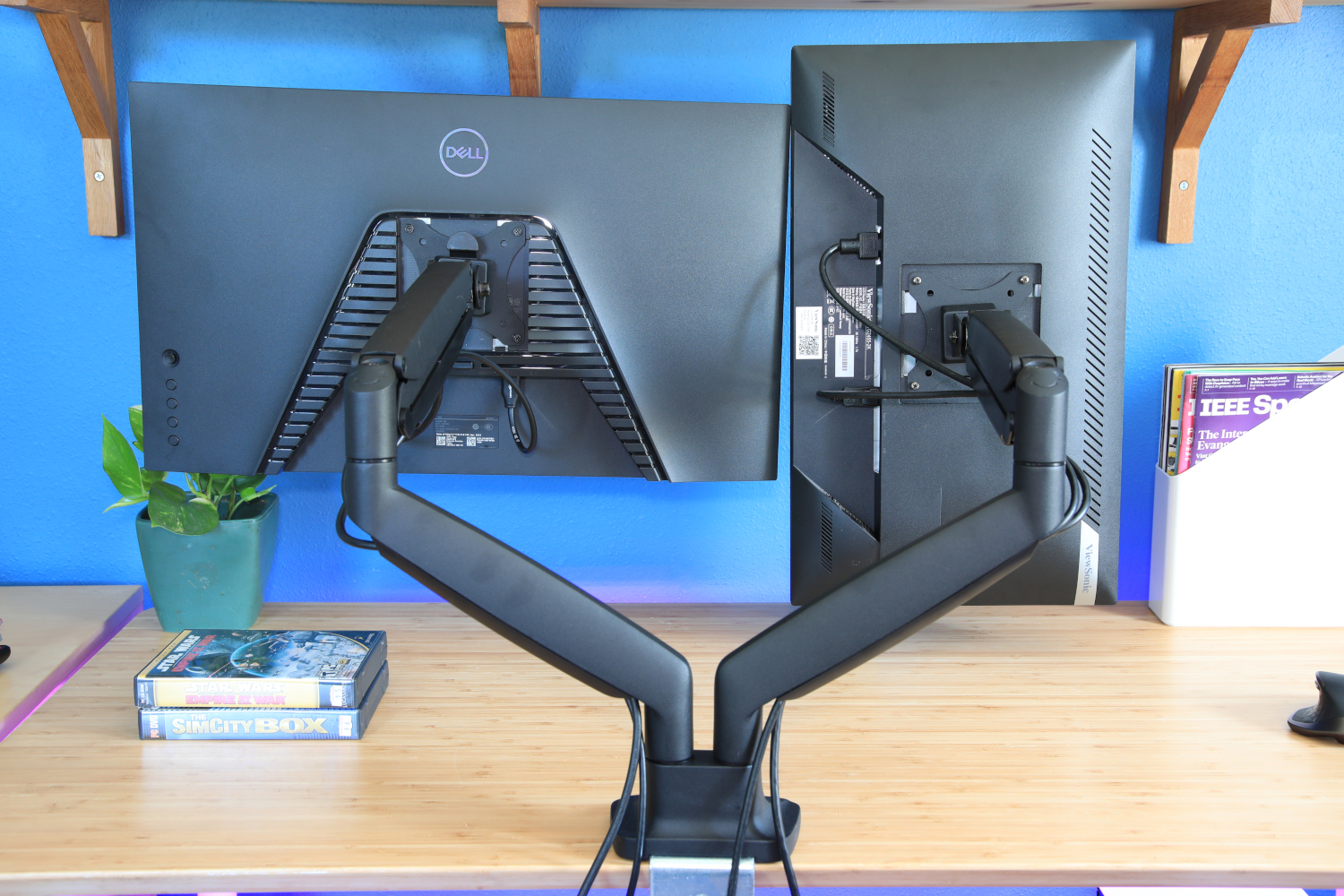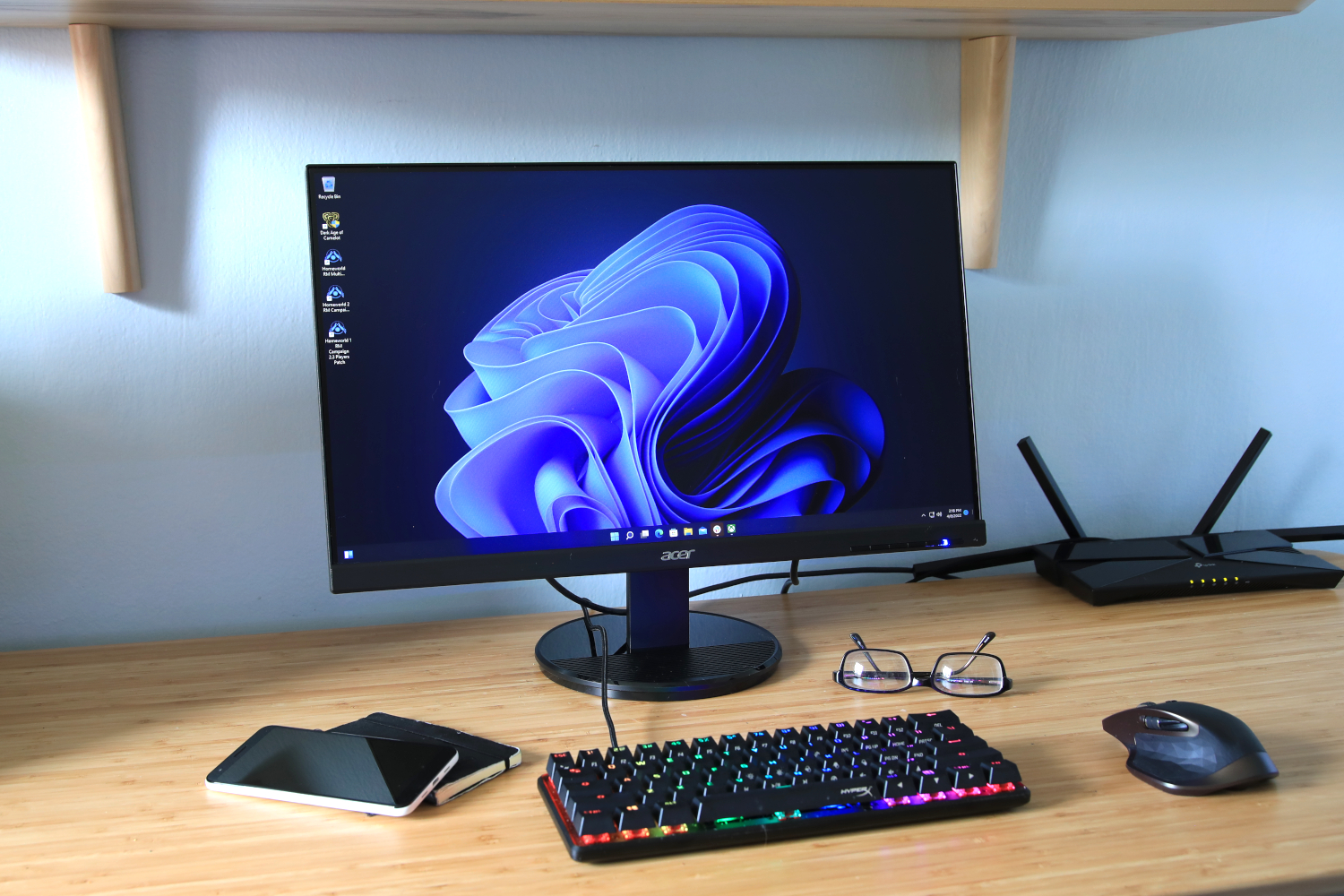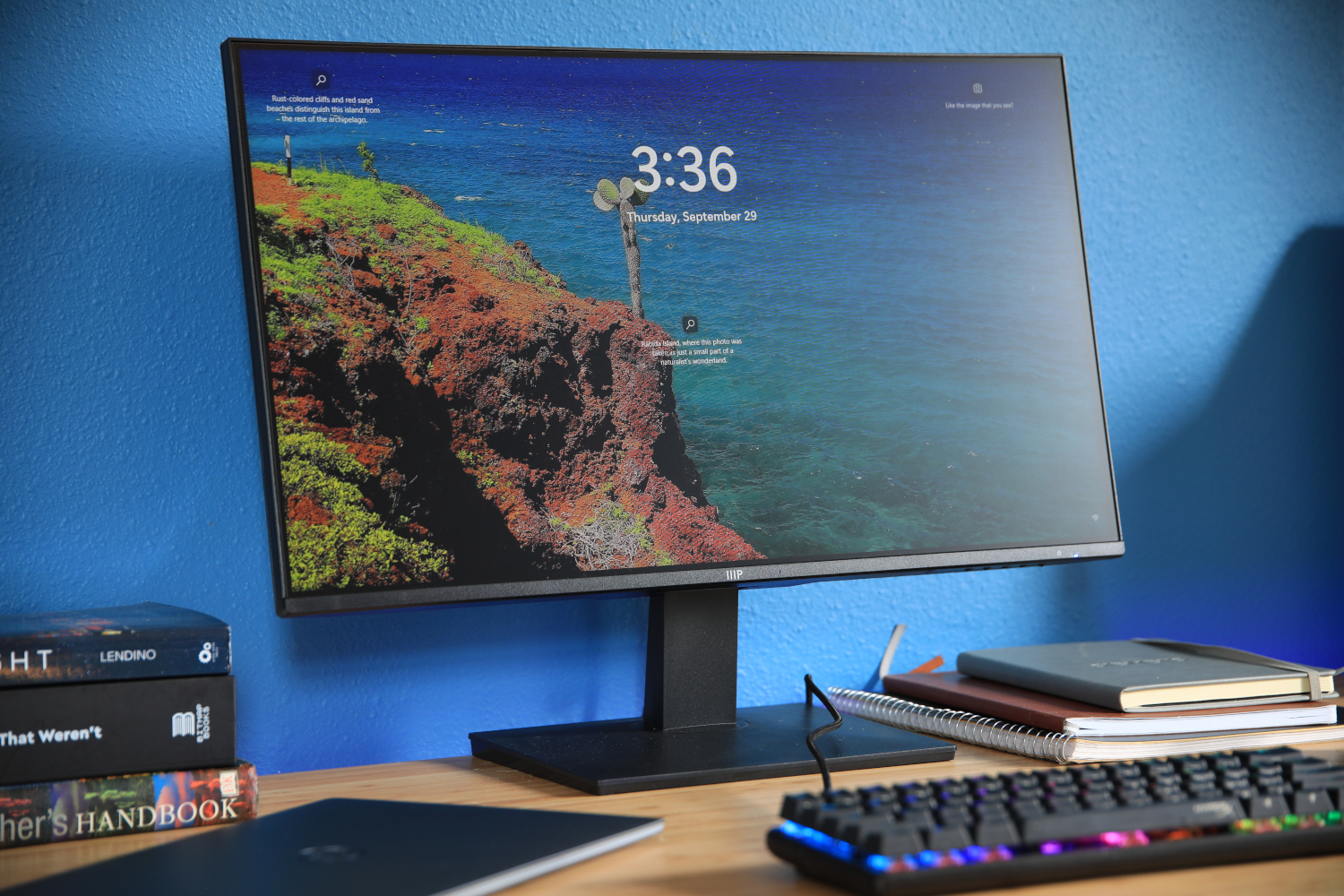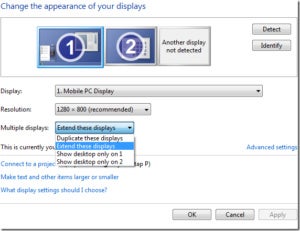Even a generous 24-inch monitor can feel cramped when you’ve got multiple windows open on your desktop (and who doesn’t?). It’s much worse if you’re confined to a laptop screen. Fortunately, it’s simple enough to add a second monitor to your PC setup and spread out.
Note: While most of the monitors we discuss below are 1080p, our article about 1080p vs. 4K monitors can help you determine what approach to take for your own dual-monitor setup; you should also check out our comparison of ultrawide monitors vs. a dual-monitor setup to learn the pros and cons of each.
Further reading: See our roundup of the best monitor arms, which can add even more panache to a dual-monitor setup.
Can your PC run dual displays?
Any modern desktop or laptop PC has the graphics capability to run dual displays. All that’s required is a second monitor. Prices for displays have gone up the past few years, but good deals can still be found. See, for example, PCWorld’s review of the Acer K24HYL 24-inch ISP display—it focuses on the features you should care about to hit $150. Same goes for the Monoprice 24-inch Crystal Pro.
If you’re determined to get the price even lower, HP’s V20 HD+ Monitor comes in at sub-$100, with a 19.5-inch diagonal screen using TN technology, which offers faster response times but less clarity off-axis. Another good option is Dell’s SE2222H, which steps you up to a 22-inch screen that features slim bezels.
If you want an even bigger screen (although the same 1920×1080 resolution), Dell’s S2721HN 27-inch IPS panel is a fine option at $119.
And if you’re in the market for a second display that’s good for gaming, check out our review of the Dell G2724D. This 1440p IPS monitor has a 165Hz refresh rate and full Adaptive Sync support, yet costs just $299, a damn good price for a gaming monitor. It’s also got a thin, discreet bezel that’s ideal for a dual-display setup.
What cables are required for dual displays?
Today’s monitors typically come with some combination of VGA, DVI, HDMI, and DisplayPort ports. In other words, you’ll have a couple options for how to connect the monitor to your PC.
While its common for VGA and DVI cables to come included with the display, you may have to purchase your HDMI or DisplayPort cable separately if you go that route. Those can be easily purchased on Amazon. (See our article on HDMI vs. DisplayPort to learn more about these competing interfaces.)
How to set up dual monitors
Step 1: Connect the monitor cables
Simply plug your second monitor into a power outlet and connect its video cable to an available port on your PC.
Step 2: Intruct Windows how to manage your dual displays
Right-click the Windows desktop and select either Screen resolution (Windows 7 and Windows 8) or Display settings (Windows 10 / 11).
In the resulting dialog box you can specify the displays’ arrangement. The Multiple Displays pull-down menu allows you to control how the two screens work together. Choosing Extend these displays will prompt Windows to treat your displays as one contiguous screen.
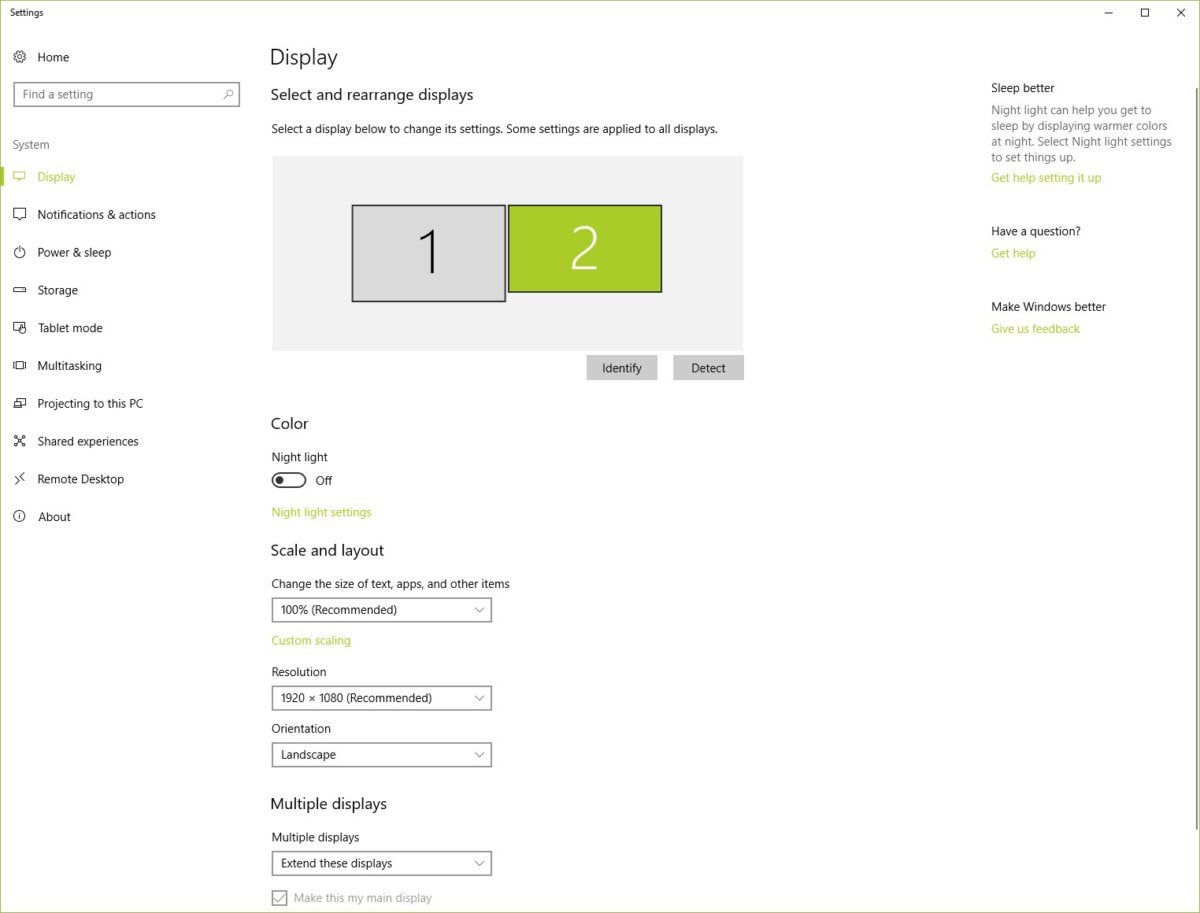
The display settings in Windows 10: Click the Identify tab under the graphic to establish your monitors’ arrangement.
Step 3: Choose monitor order
You can tell Windows which monitor is on the left or right by dragging the screen icons at the top of the dialog box. Get this wrong, and scrolling the mouse will be very confusing.
Step 4: Choose primary display
The Make this my main display option controls which monitor gets the taskbar and Start button. If you don’t see that option, the currently selected monitor is already the main one.
You can also control many of these settings by right-clicking the desktop and selecting your graphics control panel.
Further reading: How to use your TV as a computer monitor

